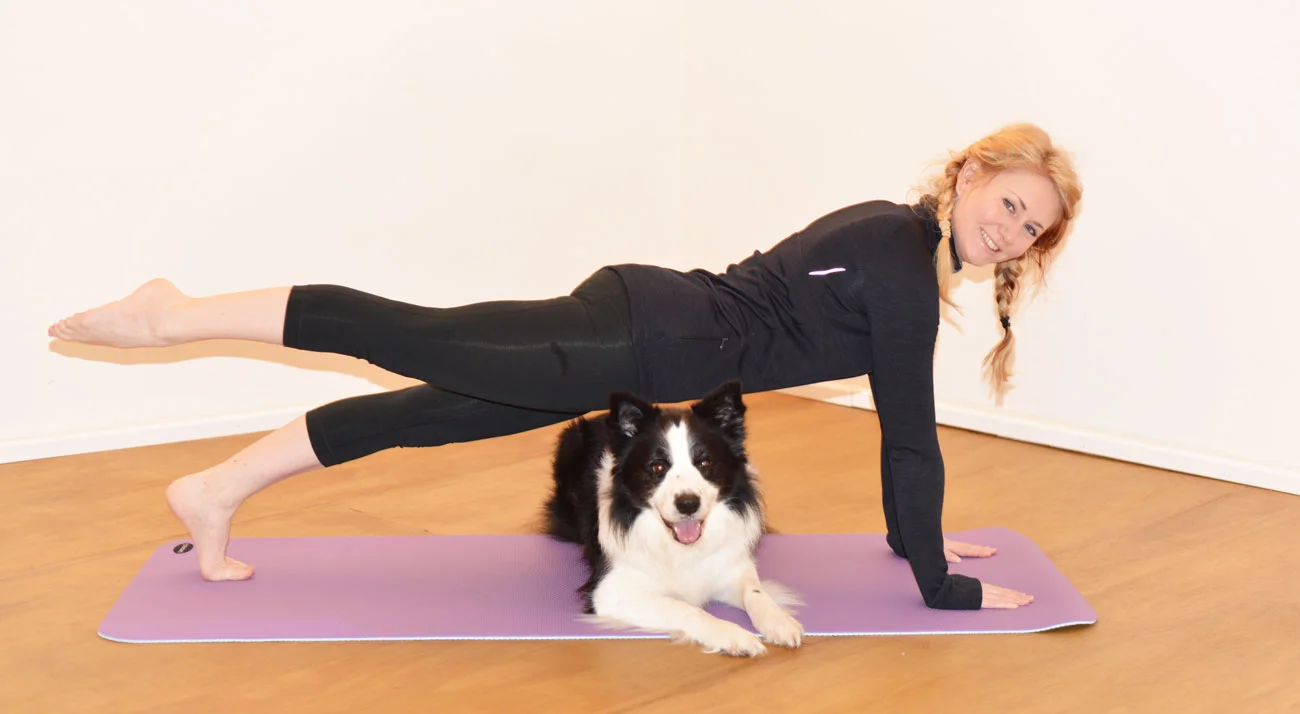In agility, we have to move well to communicate with our canine team member, I wrote about this in 2013 for Agilitynet, ‘...we need to give our dogs more co-ordinated and precise signals...’ (A Pilates approach to dog agility, Weeks, 2013), and this is more prevalent in regards to today’s handling systems and course designs; more and more at international level you are required to be able to move further away from your dog to get to the next obstacle.
I recently did a presentation in the UK on this, where I discussed the requirements of fitness for agility handlers, the way agility has changed and how it is currently very much influenced by our European counterparts. Faster technical courses, require faster technical athletes, but I’m not talking about being super fit, I’m talking about knowing how to use your body well to communicate to your dog. Combine this with great and consistent dog training, and you are setting yourself up for a good season of competition, no matter what level you compete at.
“Faster technical courses, require faster technical athletes, but I’m not talking about being super fit, I’m talking about knowing how to use your body well to communicate to your dog.”
Agility specific training instead of a fitness programme
We need to start approaching the way we move with more thought, so it is highly specific to agility, rather than following the approach and mindset of just being fit. I see all too often a fitness programme rather than an agility specific sports training programme. Of course, some people are going to want to be fitter, which is a personal choice, but agility attracts people with all different posture types and it is not necessarily the fittest and strongest that wins the race. Remember the story of the tortoise and the hare?
“We need to start approaching the way we move with more thought, so it is highly specific to agility, rather than following the approach and mindset of just being fit.”
Coordinated signals are more important than power and speed
I had the pleasure of meeting Max Sprinz (EO 2018 Large Champion) in November 2018, I asked him what he, and the rest of the German team did to make them so successful in 2018, his answer was ‘we train differently’. However, from watching Max teach, he was very much aware of body positioning with the students he worked with, he was able to pinpoint exactly where their bodies needed to be facing, with precise detail, to create success in their handling of obstacles.
This is exactly my point, the way we use and move our bodies is more important sometimes than creating power and speed from ourselves, and in fact this becomes a far better tool to have in your tool box because you are able to provide more exact coordinated signals, than rushing about like the frantic hare in Aesop’s fable.
Foundation training for handler’s movement
Years of research has shown that if we train people to become confident in their bodies as well as strong and mobile, they can move with ease, not heavy in step and have great mobility. They can become thoughtful agile movers. Ticking all the boxes, similar to the marginal gains theory, improving 1% in each area, saw Great Britain in the Olympics, achieve incredible results in the Velodrome from 2008.
Speed comes with confidence, but we shouldn’t allow ourselves to become so obsessed with being fast, we are all different, age, height, weight, gender, we need to work out how to use the body we have well.
It is quality over quantity, I’d rather see good technique than thrashing about trying to get so many repetitions in a specific time frame, it is time to apply the way we train our dogs to ourselves; Think Dog. For some the draw of that type of fitness training, and aesthetics will be greater than the function of performance, but without a more intrinsic groundwork in your foundations, training like that is only ever going to get you so far.
About the writer
Stacy Weeks is level 4 REPS & CIMSPA certified movement specialist in Pilates, personal training, Biomechanics, SAQ, Nutrition & Dance. She presents Control Precision Flow™ workshops UK wide. A member of the IBA, Intrinsic Biomechanics Association, her passions are movement analysis and helping people move better in their bodies and reducing injury. Stacy has worked with hundreds of competitors and is regarded by many as an expert in her field in the UK, working with KC Olympia winners and gold medallists at international competition.
Other interesting articles about agility
Does an agility handler need to be in top condition?
An interview with Jenna Caloander: How to turn your agility failures into strengths
Christoffer Endresen - perform better in competitions by using rituals



